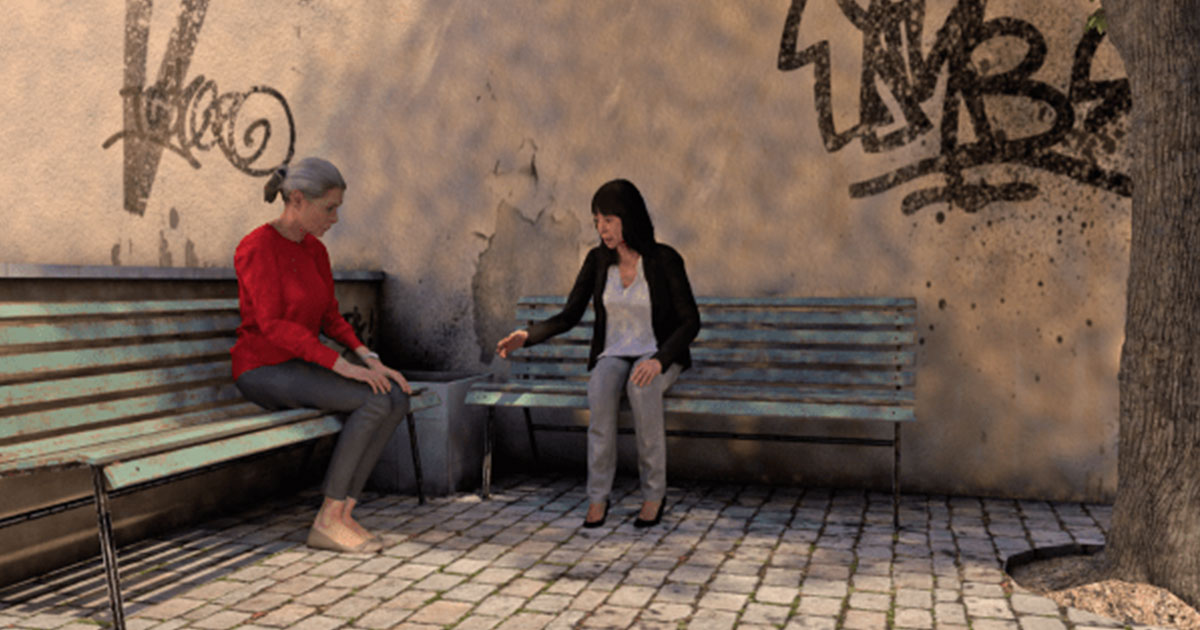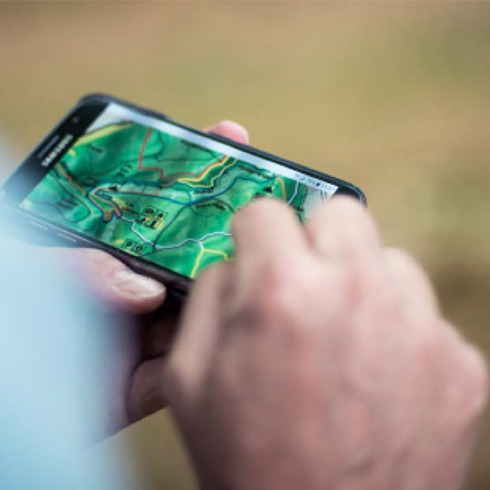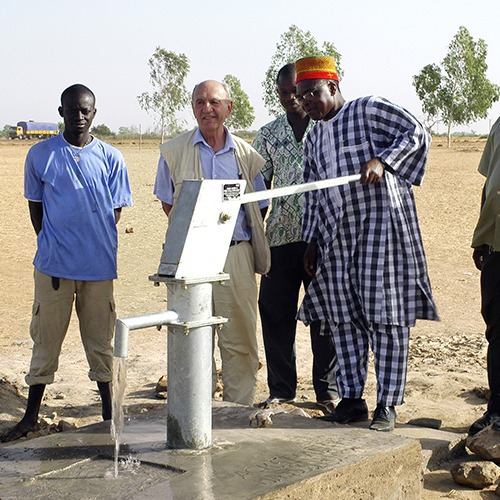Safeguarding VR: an immersive learning experience for the humanitarian sector
With demand for new ways of learning around the sensitive topic of safeguarding, the Humanitarian Leadership launched a Safeguarding Virtual Reality experience to help build empathy and access positive behaviour change. Gabrielle Schembri, Head of Learning and Organisational Services at the Academy, shares the power of virtually walking in somebody else’s shoes.

Achieving positive behaviour change is often cited as the ‘holy grail’ in learning and development – yet it’s not as simple as it sounds. Most of us know that changing behaviour is about self-awareness and individual choice. It’s about making a conscious decision to do something differently. It’s about breaking, often entrenched, habits which by their very nature of being entrenched, can take effort and time.
In the case of safeguarding, where the humanitarian imperative to do no harm is reinforced by preventing sexual abuse and exploitation, time is not on our side. It never has been and for good reason. That is not to say that safeguarding as an issue has never featured as part of compliance training for NGO staff and partners within the sector. The issue is the methodology by which it is sometimes introduced and the time, budget and human restrictions that some organisations may face in trying to implement it.
By November 2019, the Humanitarian Leadership Academy had already worked with over 20 organisations and leading subject matter experts to develop a comprehensive, self-guided online course on safeguarding that covers the essentials of safeguarding – for the sector, by the sector. We were then looking for an accessible way to complement that learning and to recreate opportunities for individuals to put the knowledge and learning from that course into practice in a safe space at scale.
We knew from sector colleagues working in safeguarding that conversations with survivors of exploitation and abuse can be challenging, and while traditional face-to-face options to practice these are available, they can be of varying quality, resource intensive, and not as easy to scale for those organisations needing to reach hundreds and thousands of staff and partners. As demand for this learning was high across the sector and behaviour change a core component, we challenged ourselves to find a solution that was relevant, accessible to all, consistent in quality and would offer individuals an alternative option to put their learning into practice.

VR impacts behaviour at a subconscious level and then helps to form new habits from a place of awareness. Don’t take my word for it, see the growing body of research coming out of academia such as Stanford VHIL’s use of Virtual Reality in empathy building. Realism is important and building a simulation using a context and set of issues that learners can relate to is key to its success.
What to expect from Safeguarding VR course?
In the case of Safeguarding VR, the 15-minute experience helps to train those working in the sector on how to handle conversations with survivors of a safeguarding incident. To do this, it combines embodied VR and conversational artificial intelligence (AI) to create an interactive, realistic scenario that fully immerses the learner. It allows them to hear their own voice and their own words and see their body language from the perspective of another individual – in this case a virtual human that they interact with throughout the scenario.
Without giving away too much for those of you eager to experience it first-hand, at one point in the scenario the learner can re-live an intervention from the survivor’s perspective by literally swapping virtual bodies. This helps the learner gain an alternative perspective on the scenario. Some analytics comprising behavioural and semantic data are provided with recommendations on how responses could be improved, and this, together with the learner’s own self-reflection helps to drive increased self-awareness, builds empathy with the survivor that, in turn, can lead to changes in behaviour: a soft-skills flight simulator indeed!

How did the scenario come about?
There were three key phases in its development: a learning discovery phase to identify the scenario by exploring the obstacles to behaviours needed within safeguarding; a scripting and scoping phase to build out the scenario, the characters and the environments you see in the final experience; and a production phase using professional actors and motion-capture to maximise the impact of the script and engage learners on a more emotional level.
It was a long, detailed but ultimately rewarding and worthwhile process – not without its challenges, particularly in ensuring realism while maintaining duty of care for learners. The subject matter is often not easy-reading nor devoid of emotion and we were mindful of the potential to trigger an adverse reaction in learners if the issues were not dealt with sensitively. Listening and working with subject matter experts was key; identifying the right scenario was crucial; and ensuring a robust and iterative feedback loop was in place throughout its development with a cross-section of 200 sector colleagues from a range of organisations, invaluable.
So, what did we learn?
To know whether this methodology of training has indeed resulted in behavioural change will require further longitudinal studies with partner organisations. Yet immediate feedback is good. Our data shows that learners felt engaged in the experience, helping to build their understanding of the principles of safeguarding as well as their confidence and willingness to apply them in their work. However, given the sensitivity of the issue and the fact that this technology is only now emerging in use within the sector, we have recommended, as an extra precaution, that organisations should ensure that the first contact with the experience be done as part of a facilitated session.
Overall, I can say with confidence that we now have a much better understanding of what it takes to harness the power of VR for affecting behavioural change and we have shared this knowledge with the sector. I believe we have shown that it’s feasible to build and above all, we know that with the right team, open dialogue, feedback and a solution-orientated mindset, anything is possible.
The Safeguarding Essentials course is one of CTG’s compulsory courses for all of our consultants to complete before deployment. Find it here and under the compulsory courses section of the CTG Boarding Pass on CTG Learning.
The Safeguarding VR is part of CTG’s recommended learning for all of our staff and can be found here.
Log in to CTG Learning’s page, hosted on Kaya by the Humanitarian Leadership Academy, here.
You can also log in via the LogIn button at www.ctg.org.
——————————————————-
Get in touch with the Humanitarian Leadership Academy team at info@humanitarian.academy
Additional resources:
- Safeguarding VR – Access the immersive experience
- Safeguarding VR – Case study
- Safeguarding Essentials – Free online course available in English, French, Spanish and Arabic
- Find out more about our work on VR and immersive films
- Download our Immersive Film Toolkit


